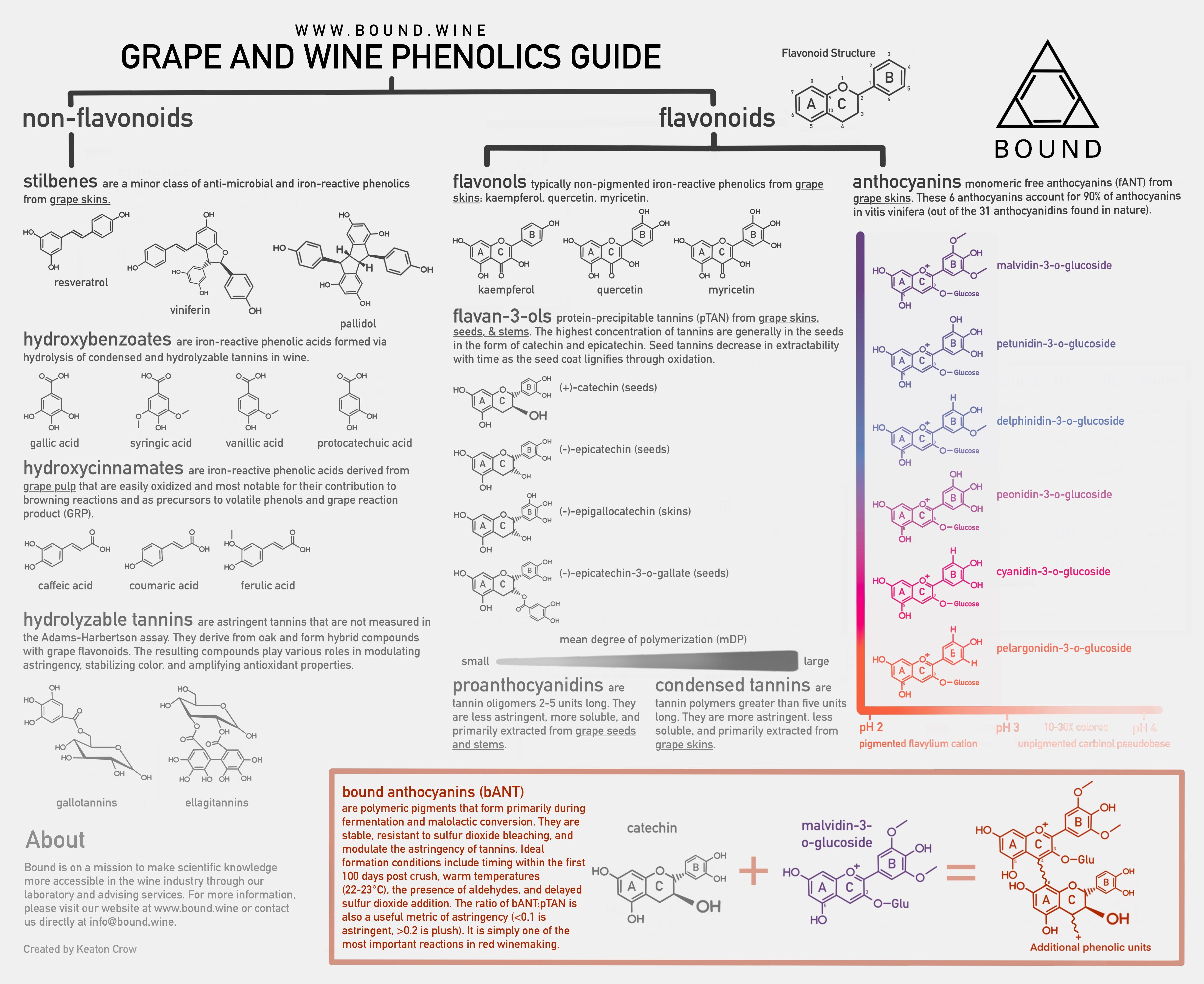

bANT:pTAN
The Bound Anthocyanins to Protein-Precipitable Tannins ratio (bANT:pTAN) is a useful metric for understanding astringency in red wines. Free Anthocyanins increase the polarity of the Tannins they polymerize with, thus decreasing their astringency. Bound Anthocyanins are also more prone to folding, making them good precursors to colloids which incorporate structural and flavor compounds together in the finished wine.
-
<0.1: The wine is likely very astringent, linear, and drying. These wines typically come from grapes with high tannin and low pigment. They take time to age unless deliberately oxidized to soften astringency.
-
11-0.15: The wine likely has moderate to high astringency. This is a classic ratio that a lot of wines fall under, and a common ratio naturally achieved throughout primary and secondary fermentation.
-
16-0.2: The wine likely has low to moderate astringency, bringing forward the flavor and structure integration. Highly concentrated wines with this ratio are sought after today for their simultaneous drinkability and age-ability. Think Cabernet Sauvignon from Napa.
-
2-0.25: The wine likely has low astringency, imparting a plush and round mouthfeel. This high ratio has become associated with high-scoring wines.
-
>0.25: The wine likely has very low perceived astringency. This ratio is commonly achieved by restraining tannin relative to anthocyanin extraction. We generally want to maximize bound anthocyanins, but over-restraining tannins can depreciate mouthfeel by limiting structure.
Free anthocyanins aren’t the only compounds in wine that modulate tannin astringency, but they are naturally occurring and highly effective. Think of these ratios like archetypes. They are useful for creating generalizations about astringency and wine style but do not encapsulate a wine's complexity or true nature. We have found these ratios to be generally true, but certainly not without exception. For instance, wines with low structure (pTAN) and a ratio of 0.1 tend not to be astringent, and wines with high structure (pTAN) and a ratio of 0.2 tend to be astringent. This is because oxygen also plays a critical role in modulating astringency by increasing tannin polarity and therefore decreasing astringency. The higher the structure, the more Bound Anthocyanin and oxidation are required to incorporate astringency into the mouthfeel. This is why wines from Barolo often need decades to age before consumption, and wines from Napa Valley can be consumed sooner despite often having similar ranges of tannins. Nebbiolo is a low-color varietal and Cabernet Sauvignon is a high-color varietal.
To learn more about the bANT:pTAN ratio and how it applies to winemaking, become a Bound advising client.
Choose options


FAQs
Frequently Asked Questions
Supplies
- Centrifuge Tubes (SKU: G1005-50-2)
- Blank Label Sheets
- Label Template (Download)
- We supply 50 mL centrifuge tubes and labels for local Santa Barbara clients upon request.
Best Practices
- Collect a sample of your wine in a way that is most representative of the entire lot (i.e. practice flushing your sample valve, collecting after movements like pumpovers, stirring your barrel, etc.).
Label
- Label each sample appropriately with your Client ID, Sample Date, and Sample ID. Samples for Phenolics analysis also require a Crush Date, Varietal, and Appellation. The analysis cannot be performed without the applicable information for each sample.
- Mark the panel.
- Individual parameters can be added at the bottom of the label. A full list can be found on our ANALYSES page.
Clients are able to submit samples by contacting us directly and scheduling a pickup, delivering directly to our lab, or sending via the mail.
To arrange for pickup, clients must be located near Lompoc, Buellton, Santa Ynez, Goleta, or Santa Barbara and notify us by 11 am for same-day retrieval. Please contact us for more information.
- We provide same-day results by 7 pm with a guaranteed turnaround within 24 hours of sample receipt.
- Samples that are not analyzed same-daly are refrigerated overnight and analyzed first thing the next morning.
- Results are delivered via email in PDF format and uploaded to your account.
- Our invoices are sent via email and are due upon receipt.
- Your payment iOur invoices are sent via email and are due upon receipt.
- Your payment is securely processed through Bound’s website using one of the most trusted e-commerce platforms in the world.
- You can also opt-in to our invoice autopay feature.s securely processed through Bound’s website using one of the most trusted e-commerce platforms in the world.
- You can also opt-in to our invoice autopay feature by clicking “SIGN UP FOR AUTOPAY” on your account page.
To ensure their stability, we ask our clients freeze their juice samples before shipment. Please contact Bound with any additional questions about sample preparation before shipment. We recommend expedited same-day to one-day shipping with a tracking number included.
Frozen
Samples can be placed in a freezer 24-hours in advance and shipped with an ice pack. Do not over-fill the polypropylene tubes or use glass containers as the frozen liquid will expand and could pose a safety concern. Freezing samples is a better alternative to boiling when analyzing compounds like ethanol, volatile acidity, free sulfur, and phenolics. Label each sample as "FROZEN".

